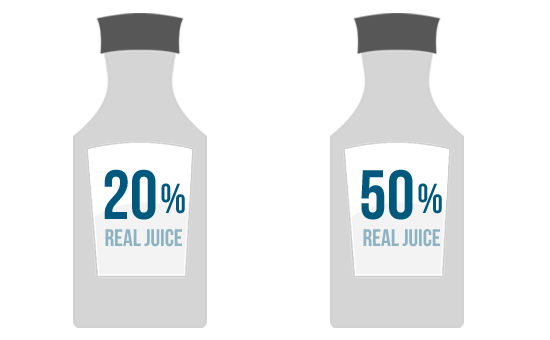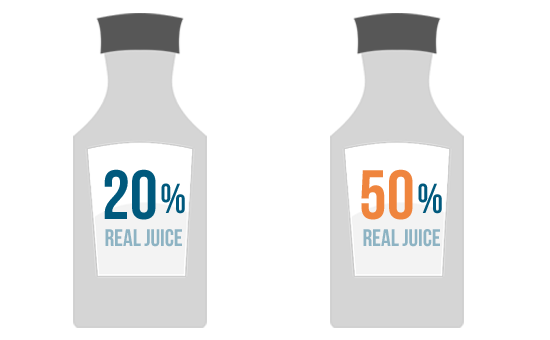Percents
Introduction to Percentages
Comparing percentages
Let's imagine you're shopping for apple juice. You find two different kinds—one contains 20% real juice, while the other contains 50% real juice.

Do you know which bottle has more real juice? Since both bottles are the same size, we can simply compare the numbers to see which percentage is larger.

50 is larger than 20, so 50% is a larger percentage than 20%. The larger the number next to the percent sign, the larger the percentage.
What about these percentages?
7% and 17%
Which is larger? Again, we'll look to see which number is larger. 17 is larger than 7, so 17% is a larger percentage than 7%.
Comparing percentages with decimals
What if you had to compare two percentages like this?
5.4% and 5.5%
At first glance, it might be difficult to tell which percentage is larger. Remember, this is just another way of asking, "Which is larger, five and four-tenths of a percent or five and five-tenths of a percent?" Since the first number is the same for both fractions, we'll compare the numbers to the right of the decimal place.

5 is larger than 4, so 5.5% is larger than 5.4%.
What about these percentages?
5.55% and 5.56%
Again, since the first number is the same, we'll compare the numbers to the right of the decimal place.

56 is larger than 55, so 5.56% is larger than 5.55%.






